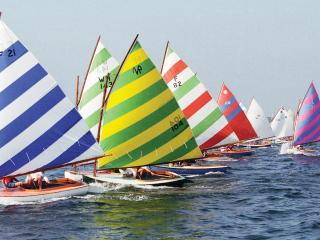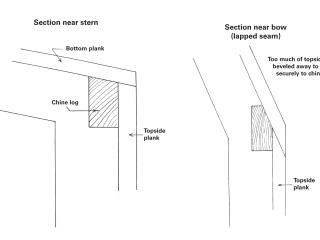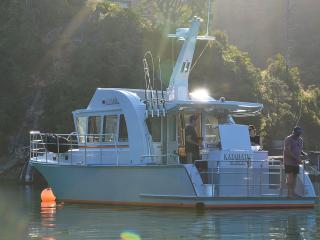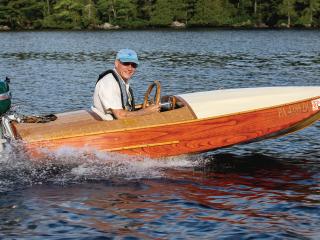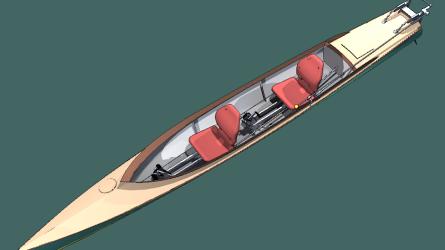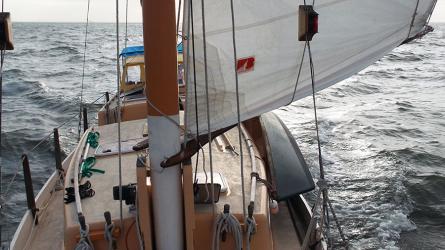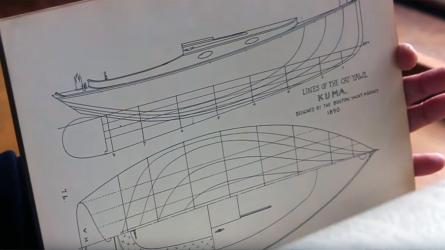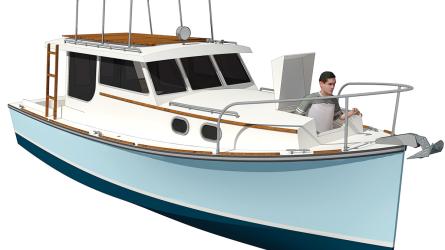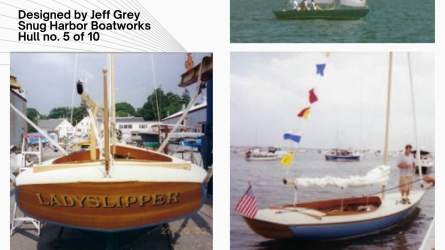September / October 2020
Aboard: EMPRESS OF BLANDINGS
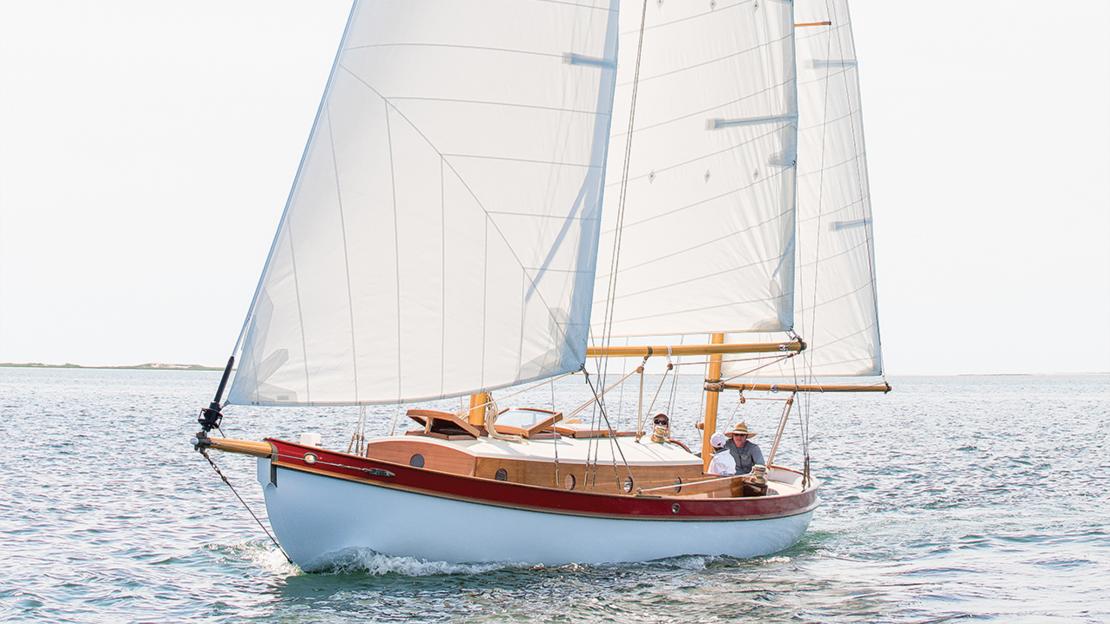
First Light Boatworks of Chatham, Massachusetts, began operating in the same building where boats have been designed and built since the 1930s, first by the legendary Spaulding Dunbar and later by Pease Brothers Boat Works. Once a naval blimp hangar before World War II, the shop is a Cape Cod boatbuilding icon. It’s hard enough to create a new business, but it’s harder still when you have to fill the sizable shoes of those before you. But, that’s not really First Light’s style. The crew didn’t set out to continue the past or fill history’s shoes. Actually, they ditched the shoes altogether, picked up a couple straw hats, and started building boats—a lot of boats.
One of those boats would be a stout, double-ended ketch developed from sketches by First Light’s owners, Woody Metzger and Jim Donovan. Working with her future owner, they developed a boat meeting the owners’ rather minimal set of requirements: a simple, double-ended day boat between 30' and 40' LOA for shorthanded sailing between the Cape and its surrounding islands. They should leave all of the unnecessary electronics and galley equipment ashore and focus on designing a beautiful boat that, according to the owners, “shouldn’t spill the wine.”
The sketches ended with a 34' ketch with clear inspiration pulled from Metzger’s Danish roots. This new boat would be strong, powerful, and by no means delicate in shape. For these reasons, the boat was named EMPRESS OF BLANDINGS. While the moniker sounds rather regal, the Empress is actually a fictional pig from the P.G. Wodehouse Blandings Castle series of books. The sow is a beloved and award-winning animal for her impressively large size and snorting beauty.
To read the rest of this article:
Click the button below to log into your Digital Issue Access account.
No digital access? Subscribe or upgrade to a WoodenBoat Digital Subscription and finish reading this article as well as every article we have published for the past 50-years.
ACCESS TO EXPERIENCE
2-for-1 Print & Digital Subscription Offer
For this holiday season, WoodenBoat is offering our best buy one, get one deal ever. Subscribe with a print & digital subscription for $42.95, and we’ll give you a FREE GIFT SUBSCRIPTION to share with someone special.
1 YEAR SUBSCRIPTION (6 ISSUES)
PLUS ACCESS TO MORE THAN 300 DIGITAL BACK ISSUES
PRINT+DIGITAL $42.95
Subscribe
To read articles from previous issues, you can purchase the issue at The WoodenBoat Store link below.
 Purchase this issue from
Purchase this issue from
